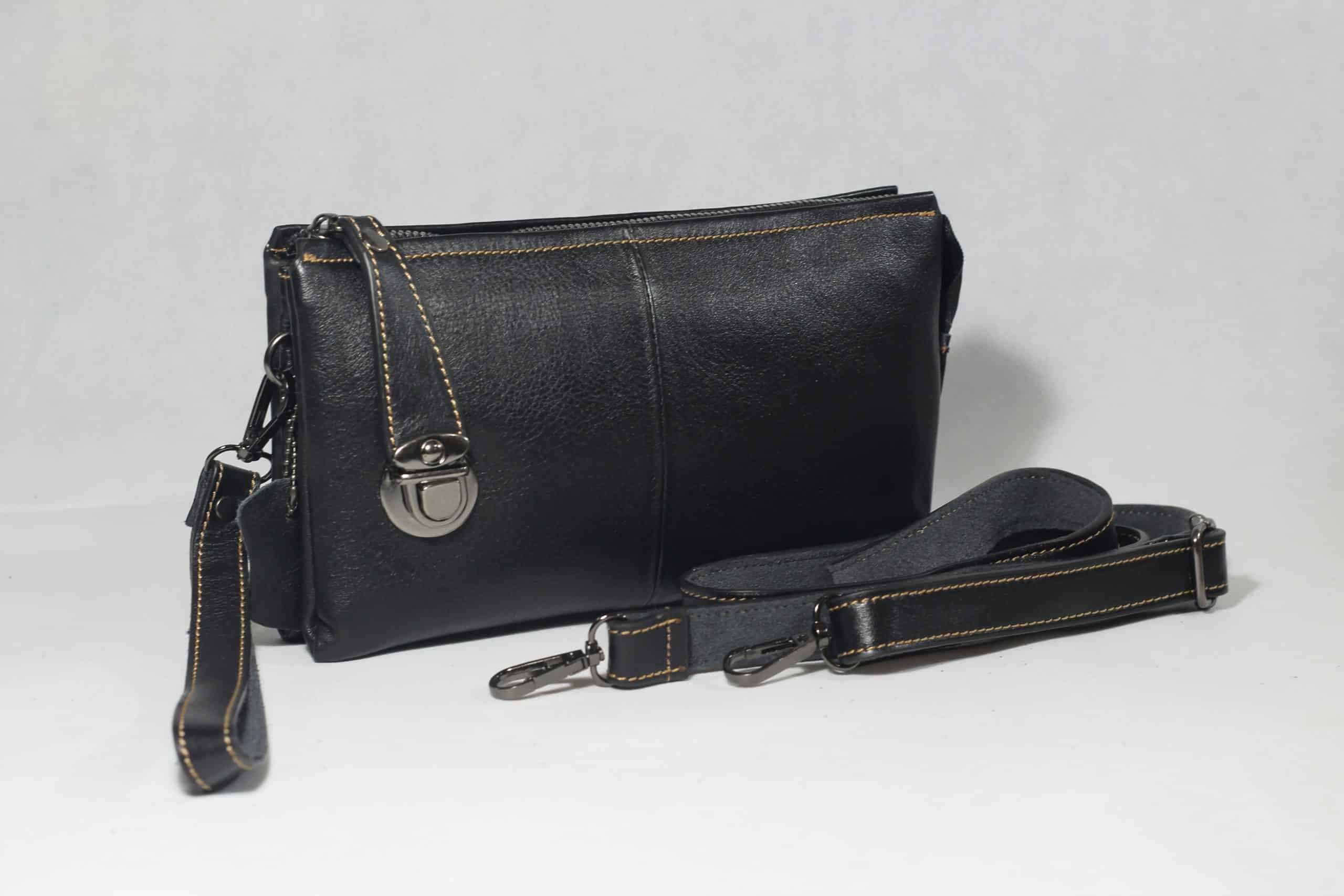Vegan leather vs real leather: what’s better for you

In the vibrant world of fashion and design, leather has always held a special place. Its durability, flexibility, and timeless aesthetic appeal make it a favored material for many. But as the world moves towards more sustainable and environmentally friendly practices, the conversation around leather and its alternatives is heating up. Vegan leather and real leather are often pitted against each other, but which is truly better for you? In this comprehensive guide, we will delve into the details of both materials and provide you with the information you need to make an informed decision.
Understanding Vegan Leather
Vegan leather, often referred to as faux leather, is a synthetic material designed to mimic the look and feel of real leather. There are several types of vegan leather, each offering different qualities and environmental impacts.
Lire également : The power of a statement piece: how to choose yours
What is vegan leather made of?
Vegan leather can be crafted from a variety of materials, including PVC, polyurethane, and plant-based materials such as cork, kelp, and pineapple leaves. However, the majority of vegan leather products on the market today are made from PVC or polyurethane, both forms of plastic.
PVC is one of the oldest forms of faux leather. However, its production process is environmentally harmful, releasing toxins into the air and leaving a considerable carbon footprint. Polyurethane, on the other hand, is less harmful to the environment than PVC. It’s versatile and can mimic the texture and feel of genuine leather quite closely.
Avez-vous vu cela : How to rock the monochrome look effortlessly
Plant-based vegan leathers, while less common, are the most sustainable options. They utilize natural, renewable resources, and their production processes are typically less harmful to the environment.
What are the benefits of vegan leather?
Vegan leather offers several benefits. Firstly, it is entirely free of animal products, making it a suitable choice for those who are committed to a vegan lifestyle or concerned about animal welfare.
Secondly, vegan leather is typically more affordable than real leather. This is because the materials used in its production are cheaper and more readily available.
Lastly, vegan leather is more resistant to stains and damage than natural leather. It’s easy to clean and maintain, making it a practical choice for items like handbags and shoes.
Exploring Real Leather
Real leather, also known as genuine or natural leather, is a durable material derived from the skin of animals, typically cows. This material has been used for centuries in various industries, including fashion, automotive, and furniture.
How is real leather made?
The process of making real leather involves several stages. First, the animal hide is prepared by removing hair and any remaining flesh. The hide is then tanned to prevent it from decomposing and to give it a distinctive color and texture. This process can be environmentally harmful, as it often involves the use of chemicals that can pollute water sources.
What are the benefits of real leather?
Real leather is renowned for its high-quality feel and aesthetic appeal. It is highly durable and can last for many years if properly cared for. Over time, real leather develops a unique patina, which many people find attractive.
Moreover, real leather is a natural product. This means it is biodegradable and does not contribute to the growing problem of plastic waste, unlike some types of vegan leather.
Environmental Impact: Vegan Leather vs Real Leather
When considering the environmental impact of vegan leather and real leather, there are several factors to consider.
Vegan leather made from plastic materials, namely PVC and polyurethane, is not biodegradable. This means that when discarded, these products can take hundreds of years to break down, contributing to the global plastic waste problem. Moreover, the production of these materials can release harmful toxins into the environment.
On the other hand, the process of producing real leather also has significant environmental downsides. The tanning process often involves the use of harmful chemicals, which can pollute water sources if not properly managed. Additionally, the livestock industry, from which most leather is sourced, is a major contributor to greenhouse gas emissions.
Plant-based vegan leathers present the most sustainable option, as they are both renewable and biodegradable. However, they are less common and can be more expensive than other types of vegan leather.
What’s Better for You: Vegan Leather or Real Leather?
When choosing between vegan leather and real leather, there’s really no one-size-fits-all answer. Your decision will likely be based on your personal priorities and lifestyle.
If animal welfare and vegan ethics are a priority for you, vegan leather is undoubtedly the better choice. Vegan leather also extends the appeal of leather-like products to a wider audience who might be disinclined to use real leather for ethical reasons.
However, if quality and durability are your main concerns, you might prefer real leather. Genuine leather products tend to last longer and can be a better investment in the long run.
From an environmental perspective, both materials have their downsides. Your best bet would be to opt for plant-based vegan leathers whenever possible, and to ensure that any leather products you purchase are sourced and produced responsibly.
Remember, the most sustainable choice is always to use what you already have, buy second-hand, or invest in quality pieces that will last a long time.
Vegan vs Real Leather: Impact on Health
The discussion about the benefits and drawbacks of vegan and real leather doesn’t end at ethics and environmental impact. Your health is another factor worth considering when choosing between these two materials.
How does vegan leather impact your health?
As previously mentioned, the majority of vegan leathers on the market today are made from plastic materials, specifically PVC or polyurethane. These materials can release chemicals called phthalates, which have been linked to health problems such as asthma, allergies, and reproductive issues.
However, not all vegan leather is created equal. Plant-based vegan leathers, while less common, do not pose the same health risks. These materials are derived from natural sources, like cork, kelp, and pineapple leaves, making them a healthier alternative to their plastic-based counterparts.
How does real leather impact your health?
Real leather, on the other hand, is often treated with various chemicals during the tanning process, including chromium salts. Prolonged exposure to these chemicals can lead to various health problems such as skin irritation, respiratory issues, and in some cases, increased risk of cancer.
However, it’s important to note that not all real leather products are harmful. Vegetable-tanned leather, for instance, uses natural substances like bark and plant tannins, making it a safer option than chrome-tanned leather.
The Final Verdict: Which is Better?
Now, coming to the final question: Is vegan leather or real leather better for you? The answer largely depends on your personal preference, ethical beliefs, health concerns, and priorities regarding environmental sustainability.
For those prioritizing animal welfare, vegan leather is the clear winner. It’s also a good choice for those looking for a more affordable alternative to real leather. However, if you’re going for a vegan option, it’s advisable to opt for plant-based vegan leathers, given their lower environmental and health impact.
If you value durability and aesthetic appeal, real leather might be your preferred choice. However, keep in mind the environmental and potential health implications. Choosing vegetable-tanned or responsibly sourced leather can mitigate some of these concerns.
In conclusion, there is no definitive answer as to whether vegan leather or real leather is better. Each has its pros and cons, and the best choice varies depending on individual needs and values. The key is to stay informed and make mindful decisions that align with your personal beliefs and priorities. Remember, reducing your consumption and investing in quality, long-lasting products is the most sustainable practice of all.
